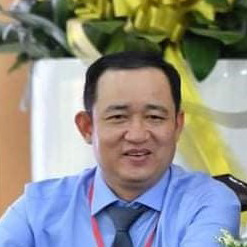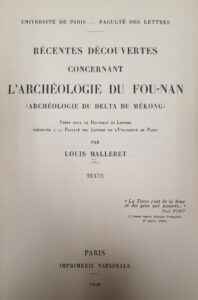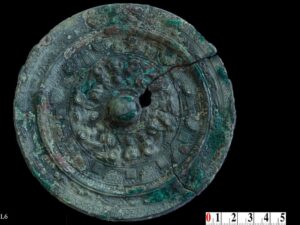 We spoke with Prof. Phan Anh Tu (USSH-Ho Chi Minh City) to learn about the materials he is using to carry out his research on “Ancient Cultural and Diplomatic Relations of Funan with China and India: An Assessment of Early Texts and Recent Archaeological Discoveries.”
We spoke with Prof. Phan Anh Tu (USSH-Ho Chi Minh City) to learn about the materials he is using to carry out his research on “Ancient Cultural and Diplomatic Relations of Funan with China and India: An Assessment of Early Texts and Recent Archaeological Discoveries.”
Could you briefly introduce your research project at HYI?
Funan (扶南) is the Chinese term for the earliest known Indianized state in Southeast Asia. Described as the “lost kingdom,” Funan was located in present-day southern Vietnam, southeast Cambodia, and a part of the Malaysian peninsula. In the colonial period, French scholars at École française d’Extrême-Orient (EFEO, founded in 1889) researched the history and archaeology of Funan. For example, Le Fou-Nan, written by Paul Pelliot, was an early work published by EFEO in 1903. Later Le Huong, a Vietnamese author, wrote Su-lieu Phu Nam (Historical Account of Funan), which was published in Vietnamese in 1974.
Inheriting the achievements of previous French and Vietnamese scholars, my research focuses on analyzing and assessing early texts of China and India, then comparing the records in these early texts with recent archaeological discoveries in the Mekong Delta, Vietnam. My goal is to bring to light evidence of a chain of events relating to the emergence, existence, and collapse of Funan, the first known Indianized state in Southeast Asia. I want to emphasize the cultural and diplomatic relations of Funan with China through the writings in Chinese texts and Chinese artifacts recently found in the Mekong Delta (Vietnam), as well as Funan-influenced Chinese Buddha statues in Shandong Province (Northeast China). My research can prove that cultural relations between Funan and China were carried out via Buddhist diplomacy during the Liang Dynasty (502-556 CE). I think this issue can lead to new views about the Buddhist links between India and China via Funan Kingdom, a stopover point on the maritime route.
What materials in the Harvard-Yenching Library have been especially helpful for you?
My research has to use sources from Vietnam, China, India and France (EFEO). Many materials have been collected and preserved in the Harvard-Yenching Library. I can find Vietnamese, English and even French collections that were published in the colonial period, which is wonderful for me. My research project falls under both history and archaeology so it requires me to search for materials in these fields. Harvard-Yenching Library helpfully has a Vietnamese collection that includes materials on archaeology and the history of the Mekong Delta (Vietnam). I search for materials using the library’s internet system, and often request to pick up books from the circulation desk which is near my office. It is wonderful that the books are made available to me within a few days. The library orientations also help scholars learn how to use the library. HYI Visiting Scholars can request any kind of books that we need, even if the books are not available in the Harvard-Yenching Library.
 Can you give a few examples of interesting findings in these library materials?
Can you give a few examples of interesting findings in these library materials?
During my stay, I found some rare books. For example, I found the doctoral dissertation of Louis Malleret, Récentes découvertes concernant l’archéologie du Fou-nan: archéologie du Delta du Mékong (1959). Louis Malleret was a French archaeologist who researched Óc Eo culture and Funan Kingdom. The doctoral dissertation was edited and published under the tittle L’Archéologie du Delta du Mékong in 1960. The book is helpful for me to compare what was discovered during the French colonial period and recent archaeological findings in the Mekong Delta.

Bronze mirror ca. East Han Dynasty (25-220), Giồng Cát B archaeological site, Óc Eo, An Giang Province. Source: Center of Archaeology/SISS, HCMC.
For example, in 1944, Louis Malleret unearthed only one Chinese bronze Buddha statue (ca. 4th – 5th c.) at Gò Cây Thị Archaeological site in Óc Eo Plain. In 1999, Vietnamese archaeologists discovered another Chinese Buddha statue (ca. 4th-5th c.). Vietnamese archaeologists also found one Chinese bronze mirror (ca. East Han Dynasty (ca. 1st-3rd c.)) at Giồng Cát B in 2019, while Malleret didn’t discover a number of ancient Chinese artifacts because he had only 1.5 years to excavate in the Óc Eo Plain. The previous and later archaeological discoveries provide me with essential traces to do comparative research at HYI.
